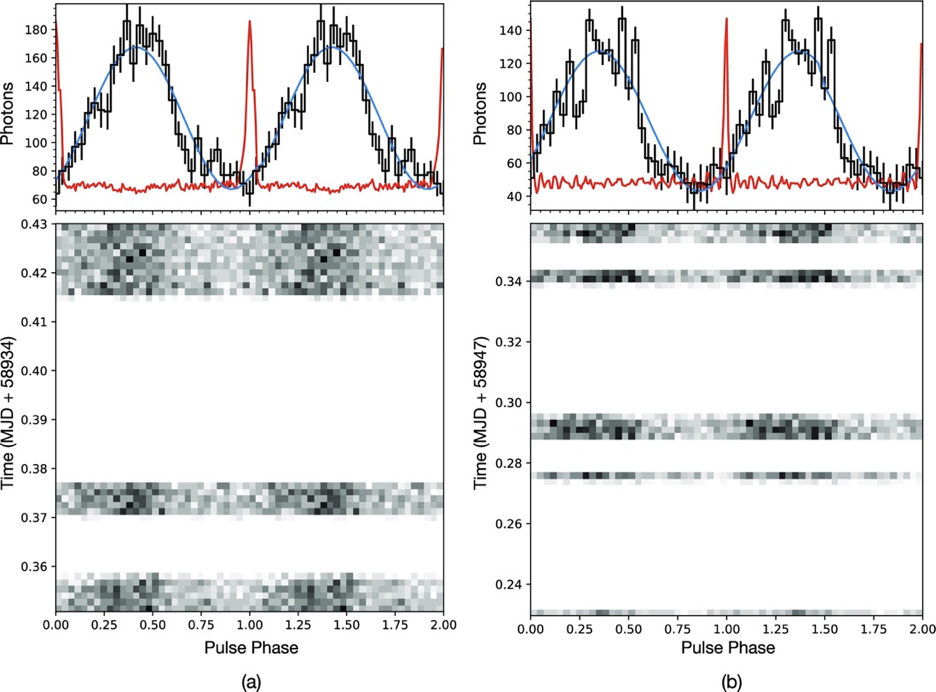NICER / ISS Science Nugget
for June 22, 2023
Taking a Magnetar's Pulse
Following NICER's discovery in March 2020 of 1.36-second pulsations from a candidate magnetar - a neutron star with a powerful magnetic field - radio observations with multiple telescopes around the world confirmed that the object, known as Swift J1818.0-1607, was also seen to pulse in the radio band. Swift J1818 was then only the 5th radio-emitting magnetar known, and its radio and X-ray properties together suggested that it was a "missing link" between magnetars, which are very young, and certain classes of radio pulsars that are thought to represent a later evolutionary stage of the same basic population. Some of the radio observations were carried out with facilities of NASA's Deep Space Network of dishes, which are occasionally pressed into service for science investigations. During March and April 2020, NASA and the DSN team coordinated simultaneous and near-simultaneous coverage of the Swift J1818 outburst; results of this effort were recently published in the peer-reviewed UK journal Monthly Notices of the Royal Astronomical Society by K. Bansal (NASA Ames) and collaborators.
In addition to the basic radio properties of Swift J1818's emissions, Bansal et al. describe the alignment and shape differences between the magnetar's radio and X-ray pulses. Specifically, the radio pulse is found to be sharp, while the X-ray pulse is broad and approximately sinusoidal - both are typical of magnetars. Less typical is the finding that the radio and X-ray pulses are substantially offset from one another, by as much as 40% of the full pulse cycle, with the X-ray pulse lagging the radio. Because the X-rays are thought to originate in heated magnetic polar caps on the star's surface, while the radio emission likely arises from particle flows high in the magnetosphere, an offset in the received pulses purely due to the travel time of light is not surprising, but models suggest that this effect should account for at most a 16% phase offset. The larger measured offset suggests a fundamental longitudinal misalignment of the two emission regions in the vicinity of the neutron star. Such a misalignment may be the result of a wandering surface hot spot, a phenomenon that has been seen in two other magnetars, and indeed there's a hint that the phase offsets differ slightly between the March and April data, but definitive measurements could not be made before Swift J1818's outburst faded. Future measurements of this and other magnetars should elucidate the mechanisms responsible for both X-ray and radio pulsations from magnetars.

Pulsation profiles acquired in near-simultaneous observations at radio (red) and X-ray (black) wavelengths, on March 26 (left) and April 8 (right), 2020. The radio data were obtained with the Deep Space Network's 70-meter diameter dish in Robledo, Spain; the X-ray data were obtained with NICER. In each panel, data stacked with the 1.36-second pulse period are plotted twice for clarity. (Credit: Bansal et al. 2023)
<< Previous
Main Index
Next >>